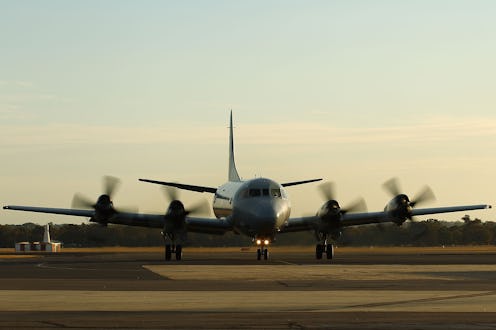News
Will Flight 370 Spark A New Era Of Plane Tracking?
A preliminary Malaysia Airlines Flight 370 report released by the Malaysia government Thursday called for a real-time tracking system for commercial aircrafts. In addition to releasing details on the missing Malaysia flight's disappearance from civilian radar and audio recordings of conversations between the cockpit and air traffic control, the Malaysian Transport Ministry says the United Nations should study whether automatic tracking of planes is possible — and it's about time. Unfortunately, while changes in monitoring flight technology could be revolutionary, adjustments wouldn't be easy.
"There have now been two occasions during the last five years when large commercial air transport aircraft have gone missing and their last position was not accurately known," the Transport Ministry said in its report. "This uncertainty resulted in significant difficulty in locating the aircraft in a timely manner."
It's been nearly two months since the Boeing 777 carrying 239 passengers and crew disappeared after leaving Kuala Lumpur on March 8. But this isn't the first time such a tracking system has been proposed. The second missing plane incident cited in the report references Air France 477, which vanished over the Atlantic Ocean in 2009. It took days to find the wreckage, and two years to retrieve the black boxes.
No huge changes were made after the disappearance of the Air France flight, though the conversation was sparked by the incident. Officials recommended an increase in pilot training afterwards, and protocol has since changed. Still, regulations on real-time speed, altitude and location transmissions have yet to be in place. Apparently, it took a second devastating episode to raise more questions over improvements in modern-day technology.
A system much like the one Malaysian officials are calling for already exists, though airlines have to pay for it. ACARS, or Aircraft Communications Addressing and Reporting System, is used for routine communications and reporting maintenance issues while planes are in flight. It's usually used over land via radio, and costs more to operate by satellite over large bodies of water. In fact, Flight 370 used ACARS, though it was one of the systems turned off. Investigators speculate that someone in the cockpit deliberately shut it down.
Yes, using a program independent of the aircraft's transponder (which was also reportedly turned off on Flight 370) would be invaluable to flight safety. But, it would also be extremely costly for airlines. A triggered transmission system, a technology already in the works, could cost an airline nearly $50 million. The program would prompt the automatic sending of transmissions under "exceptional circumstances," International Air Transport Association Chief Executive Officer Tony Tyler told Bloomberg.
Other experts say it's not just hardware that companies have to worry about. The more data being sent around, the more bandwidth transmitted, which means additional costs.
